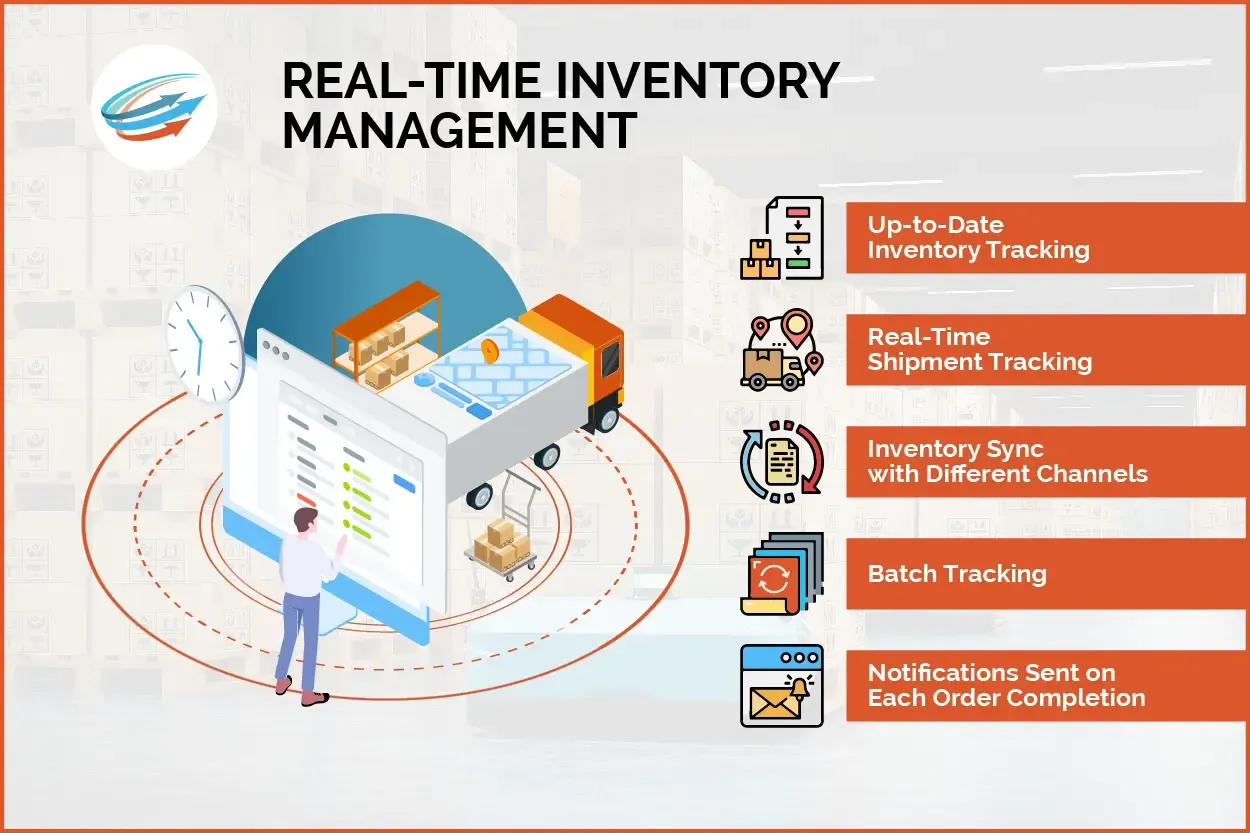Building a Real-time Inventory System: A Modern Approach with Laravel and Vue.js
Author: Hocine Mechouh
Published on: March 15, 2024
Picture this: It’s Black Friday, and thousands of customers are frantically clicking “Buy Now” on your e-commerce platform. Your inventory system needs to handle this surge flawlessly, keeping stock levels accurate down to the last item. Sounds challenging? Let’s dive into building exactly that kind of robust real-time inventory system using Laravel and Vue.js.

The Real-time Inventory Challenge
Before we jump into the code, let’s understand what makes real-time inventory management tricky. Imagine ten customers simultaneously trying to buy the last five items in stock. Without proper handling, you might end up with oversold inventory or frustrated customers. Here’s what we need to tackle:
- Concurrent updates (multiple users buying simultaneously)
- Data consistency across distributed systems
- Lightning-fast performance under load
- Scalability for growing businesses
Building the Foundation: The Backend Architecture
Think of our backend as a well-orchestrated symphony, where every component plays its part perfectly. Here’s the core of our event broadcasting system:
class InventoryUpdated implements ShouldBroadcast
{
public $product;
public $quantity;
public $action;
public function broadcastOn()
{
return new PrivateChannel('inventory.updates');
}
}This might look simple, but it’s the backbone of our real-time communications. Let’s build upon it.
The Heart of the System: Inventory Management
Here’s where the magic happens. We need to ensure that every stock update is atomic and consistent:
class InventoryService
{
public function updateStock(Product $product, int $quantity, string $action)
{
return DB::transaction(function () use ($product, $quantity, action) {
$product = Product::lockForUpdate()->find($product->id);
if ($action === 'decrease' && $product->stock < $quantity) {
throw new InsufficientStockException();
}
$product->stock = $action === 'increase'
? $product->stock + $quantity
: $product->stock - $quantity;
$product->save();
event(new InventoryUpdated($product, $quantity, $action));
return $product;
});
}
}Notice the lockForUpdate()? That’s our shield against concurrent updates. It’s like putting a “do not disturb” sign on our inventory record while we’re updating it.
The User Interface: Real-time Updates with Vue.js
The frontend needs to be just as sophisticated as our backend. Here’s a reactive component that keeps users informed in real-time:
<template>
<div class="inventory-tracker">
<div class="stock-level" :class="stockLevelClass">
Current Stock: {{ currentStock }}
<div v-if="pending" class="pending-indicator">
Processing Update...
</div>
</div>
</div>
</template>
<script setup>
import { ref, computed, onMounted } from 'vue'
import Echo from 'laravel-echo'
const currentStock = ref(0)
const pending = ref(false)
onMounted(() => {
const echo = new Echo({
broadcaster: 'pusher',
key: process.env.VUE_APP_WEBSOCKET_KEY,
encrypted: true
})
echo.private('inventory.updates')
.listen('InventoryUpdated', handleInventoryUpdate)
})
</script>Scaling for Success: Redis to the Rescue
As your application grows, Redis becomes your best friend. Here’s how we implement caching to handle high traffic:
class CacheService
{
public function getCachedStock(Product $product)
{
return Cache::remember(
"product_{$product->id}_stock",
now()->addMinutes(5),
fn() => $product->fresh()->stock
);
}
}Handling the Unexpected: Error Recovery
Even the best systems can fail. The key is failing gracefully and recovering smoothly:
class InventoryExceptionHandler
{
public function handle(Exception $exception)
{
if ($exception instanceof StockUpdateFailedException) {
Log::error('Stock update failed', [
'product_id' => $exception->product->id,
'current_stock' => $exception->product->stock
]);
event(new StockUpdateFailedEvent($exception->product));
return response()->json([
'error' => 'Stock update failed',
'retry_after' => 5
], 503);
}
}
}The Secret Sauce: Performance Optimization
Want to know what separates a good inventory system from a great one? Batch processing. Instead of updating one item at a time, we can handle multiple updates efficiently:
class BatchInventoryService
{
public function processBatchUpdates(array $updates)
{
return DB::transaction(function () use ($updates) {
collect($updates)->chunk(100)->each(function ($chunk) {
$this->processUpdateChunk($chunk);
});
});
}
}Lessons Learned and Best Practices
After implementing several real-time inventory systems, here are the key takeaways:
- Always Use Transactions: They’re your safety net against data inconsistencies.
- Implement Optimistic UI: Update the UI immediately, but be ready to rollback.
- Cache Strategically: Not everything needs to be real-time.
- Plan for Failure: Because in distributed systems, things will fail.
What’s Next?
Building a real-time inventory system is just the beginning. Consider these future enhancements:
- Implementing inventory forecasting
- Adding webhook notifications for external systems
- Building an audit trail for inventory changes
- Creating administrative dashboards for inventory insights
The Road Ahead
Real-time inventory management is a complex challenge, but with the right architecture and tools, it’s completely manageable. The system we’ve built today can handle thousands of concurrent users while maintaining data consistency and providing a smooth user experience.
Remember: The key to success isn’t just in writing the code, but in understanding the problems you’re solving and choosing the right tools for the job.
What challenges have you faced with real-time inventory systems? Share your experiences in the comments below!
Want to dive deeper into Laravel and Vue.js integration? Follow me for more articles on building robust, scalable applications with modern web technologies.